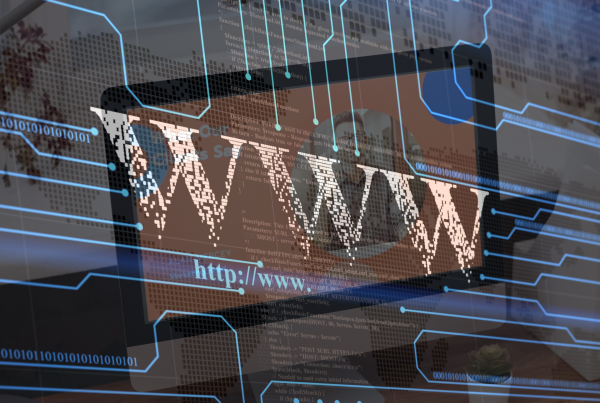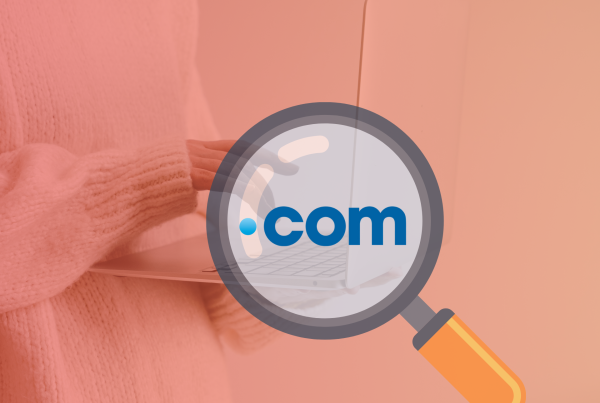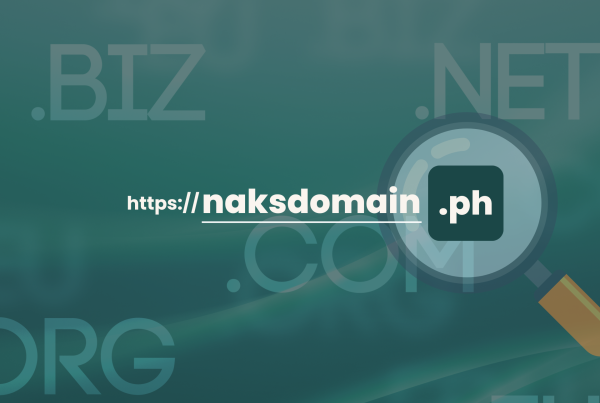Updated: 14 December 2023 • 9 minutes Read
In the digital world, acquiring a domain involves more than choosing a catchy name. Understanding the importance of “domain authentication” is crucial for protecting your online identity.
Due to the rise in phishing scams and fake emails, many websites now use domain authentication protocols to verify information senders. This helps prevent scams and brings benefits like improved search engine ranking and increased user trust.
Although SSL certificates are often linked with domain authentication, it’s vital to know that various methods exist to validate your identity in the vast world of web services. SSL certificates play a strong role in securing emails and websites by confirming the domain owner’s identity.
Domain authentication extends beyond encrypted communication and is widely used across online platforms. Major platforms like Facebook rely on it to boost user trust, while popular email delivery services like Amazon SES and SendGrid use it to confirm email address ownership.
Let’s explore situations where domain authentication is crucial and discuss effective methods for authenticating your domain.
 What is domain verification?
What is domain verification?
Domain authentication is a crucial technology that utilises domains to confirm the identity of content senders, ensuring the secure transmission of information. Its main goal is to validate that content and services from a specific domain are authentic and not susceptible to impersonation by malicious entities.
The increasing prevalence of cybercrimes, especially phishing scams, has raised concerns. These scams often involve deceptive tactics, such as creating fake pages resembling legitimate payment pages and deceiving users. In this context, domain authentication is essential in confirming that a domain is a genuine destination, serving as a key element for safe Internet usage. Consequently, domain authentication has become an indispensable technology in protecting users against various online threats.
There are two main categories of domain authentication: SSL certificate-based domain authentication and domain authentication for web services. Both play crucial roles in strengthening the security of online interactions and enhancing users’ confidence in the legitimacy of the digital platforms they interact with.
SSL certificate-based domain authentication
The SSL (Secure Sockets Layer) certificate is a technology with multiple critical purposes in securing online communication. Also known as SSL/TSL, SSL server certificate, or server certificate, it confirms a website’s existence and encrypts the communication between users and the site.
When an SSL certificate is installed, it indicates that a Certificate Authority (CA) has officially verified the site’s legitimacy and confirmed the authorisation of its operator. This certification is essential for building trust and confidence in the authenticity of the online platform.
Websites with SSL certificates encrypt their communication content using the SSL protocol. This encryption ensures that even if the communication is intercepted, there is no risk of the content being leaked or tampered with. Users can easily identify the presence of an SSL certificate on a website by checking the URL, which will start with “https” instead of the standard “http.” Additionally, a lock or key icon is typically displayed at the beginning of the browser address, offering users a visual cue that the site is secure.
While initially reserved for pages handling sensitive information like credit card details, SSL usage has evolved. In contemporary times, implementing SSL on all pages has become standard practice, reflecting a broader commitment to ensuring the security and privacy of online interactions across the entire website.
Domain authentication for web services
Web services, including social networking sites (SNS) and email distribution platforms, are crucial in disseminating information. However, these platforms are sometimes exploited for malicious purposes, such as sending spam emails and fraudulent notifications. Hence, it becomes crucial to verify the true identity of the sender.
One effective method for ensuring the legitimacy of the sender’s account is through web service domain authentication. This authentication system uses the domain to confirm that the account is genuinely owned by the legitimate domain owner.
Prominent email delivery services like Facebook, Amazon SES, and SendGrid have adopted domain authentication systems. These systems allow users to authenticate their domains, offering a robust mechanism to demonstrate that they are not involved in fraudulent activities. These services enhance security and trust by implementing such measures, ensuring that communication channels remain reliable and secure.
 Advantages and disadvantages of domain verification
Advantages and disadvantages of domain verification
Domain authentication, which proves the identity of information senders, has recently been incorporated into many sites and services, but what are the advantages and disadvantages of implementing it?
We will introduce the advantages and disadvantages of domain authentication using specific examples.
Advantages of Domain Authentication
-
Enhanced Security
Example: A scenario where an e-commerce website uses domain authentication. Customers can trust that order confirmation emails are genuinely from the company, reducing the risk of phishing attacks.
-
Reduced Spam and Fraud
Example: Social networking sites utilising domain authentication can prevent the spread of fake notifications, creating a more reliable and secure environment for users.
-
Establishes Trust
Example: Financial institutions implementing domain authentication in their communication channels can build trust with clients, assuring them that official communications are indeed from the bank.
-
Protection of Brand Reputation
Example: An online marketplace implementing domain authentication safeguards its brand by preventing malicious actors from impersonating the platform, preserving customer trust.
-
Improved Deliverability
Example: Email delivery services like SendGrid ensure that emails sent from authenticated domains have higher deliverability rates, as they are less likely to be marked as spam.
Disadvantages of Domain Authentication
-
Implementation Complexity
Example: Small businesses may find implementing and maintaining domain authentication protocols challenging due to the technical complexities involved, potentially leading to communication issues.
-
Initial Setup Overhead
Example: For a blog platform, the initial setup of domain authentication might be time-consuming, requiring users to navigate through various settings to ensure proper configuration.
-
Dependency on Service Providers
Example: Users relying on third-party email delivery services might face challenges if those services experience downtime or fail to authenticate domains, affecting communication reliability properly.
-
Potential for False Positives
Example: Overly stringent domain authentication measures might mistakenly flag legitimate communications as fraudulent, leading to inconvenience for users and a potential loss of important messages.
-
Cost Considerations
Example: Some advanced domain authentication features may come with additional costs. This could be a factor for startups or organisations with limited budgets.
While domain authentication offers significant advantages in security, trust-building, and reduced fraud, carefully considering potential disadvantages, such as complexity and costs, is essential for effective implementation.
 Impaction on advertising effectiveness
Impaction on advertising effectiveness
The presence or absence of domain verification can significantly impact advertising effectiveness. Here are some key points to consider:
-
Enhanced Credibility
Ads from domain-verified sources are perceived as more credible and trustworthy. Users are more likely to engage with content they know originates from a legitimate and authenticated domain.
-
Prevention of Fraudulent Activities
Domain verification acts as a deterrent to malicious actors. It reduces the likelihood of ad fraud, fake promotions, and other deceptive practices that can harm advertisers and consumers.
-
Ad Performance Optimisation
On platforms like Facebook, domain verification is often linked to specific features, such as total event measurement. Utilising these features can lead to more effective ad performance tracking and optimisation.
-
Ad Placement Considerations
Some advertising platforms prefer domain-verified accounts for ad placement, which can result in better visibility and exposure for authenticated advertisers.
Absence of Domain Verification
-
Decreased Ad Performance
In the case of Facebook ads, the absence of domain verification, especially on iOS, can lead to limitations in tracking capabilities (e.g., total event measurement). This can decrease ad performance, making measuring and optimising campaigns challenging.
-
Suspension Measures
Ad platforms may suspend ads or accounts lacking domain verification, especially if they are suspected of fraud. This can lead to disruptions in advertising campaigns and potential financial losses for advertisers.
-
User Trust and Engagement Issues
Users may be hesitant to engage with ads that are not domain-verified. Security concerns and the rise of online scams make users more cautious, and they may avoid interacting with ads that do not come from authenticated sources.
-
Access Analysis Challenges
Without domain verification, accurate access analysis becomes challenging. Advertisers may struggle to gather comprehensive data on user interactions, making it harder to assess the impact and success of their campaigns.
Domain verification is not only a security measure but also a crucial factor in maintaining trust, optimising ad performance, and ensuring the success of advertising campaigns. Advertisers are encouraged to prioritise domain authentication to enhance their online advertising efforts’ overall effectiveness and credibility.
Summary
This time, we explained domain authentication to prove your identity when transmitting information on the web. In recent years, security awareness has increased due to many reports of damage caused by Internet crimes, such as phishing scams and account hijacking, and domain authentication has become mandatory even for privately run blogs and sites.
Furthermore, search engines and web advertising have policies that give preferential treatment to accounts with domain verification, so domain verification is becoming increasingly crucial in pursuing access and revenue.
Topics: Domain
Don’t forget to share this post!


